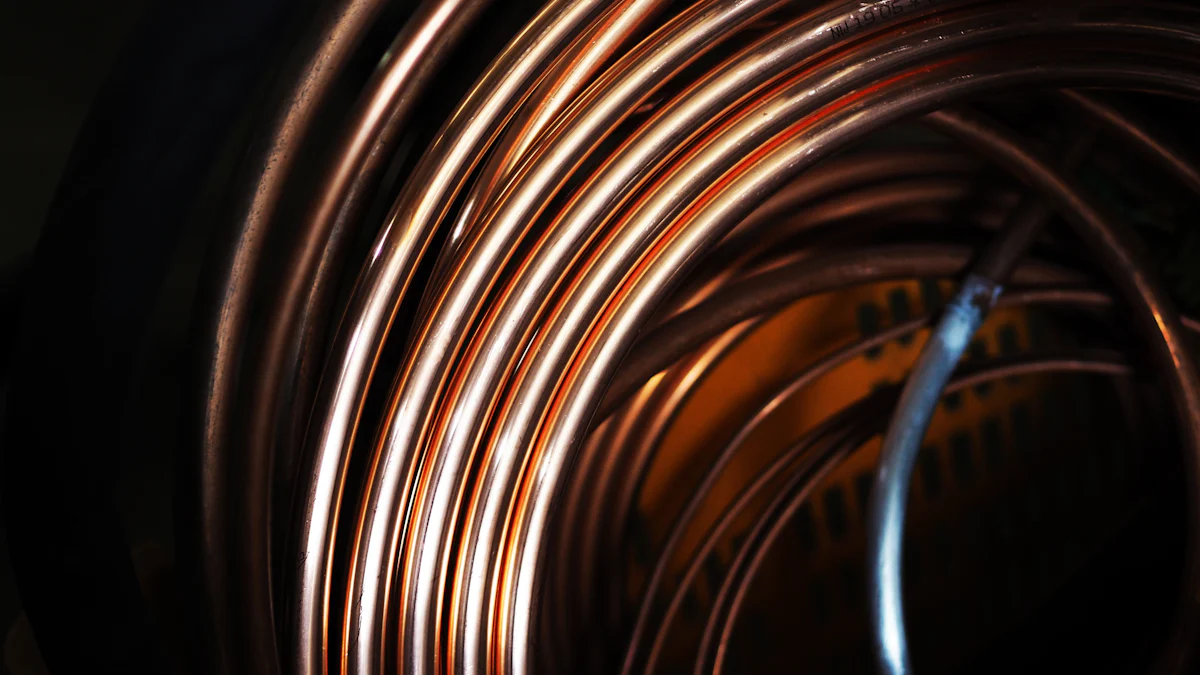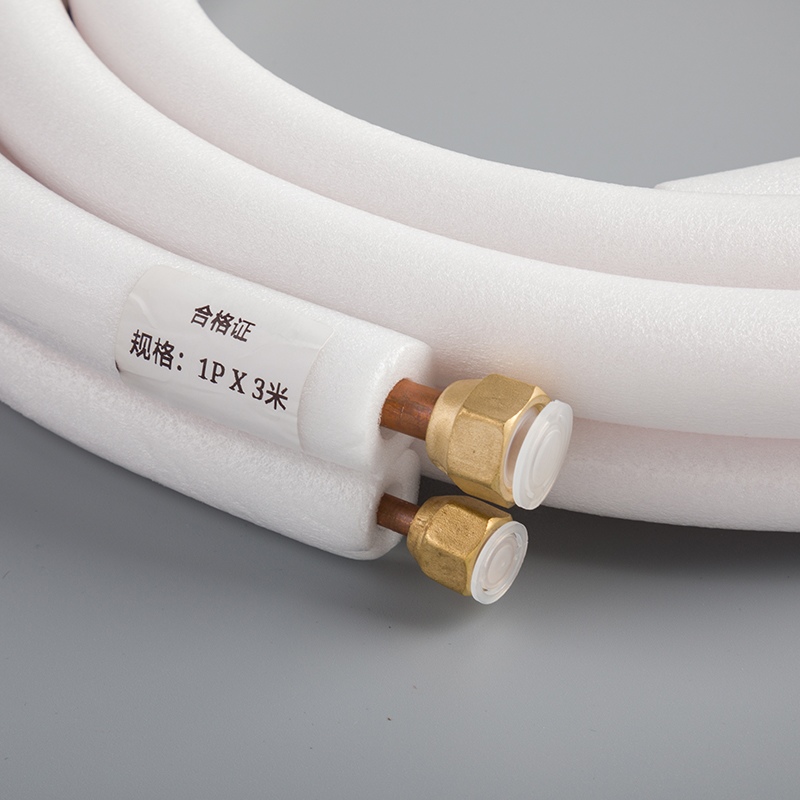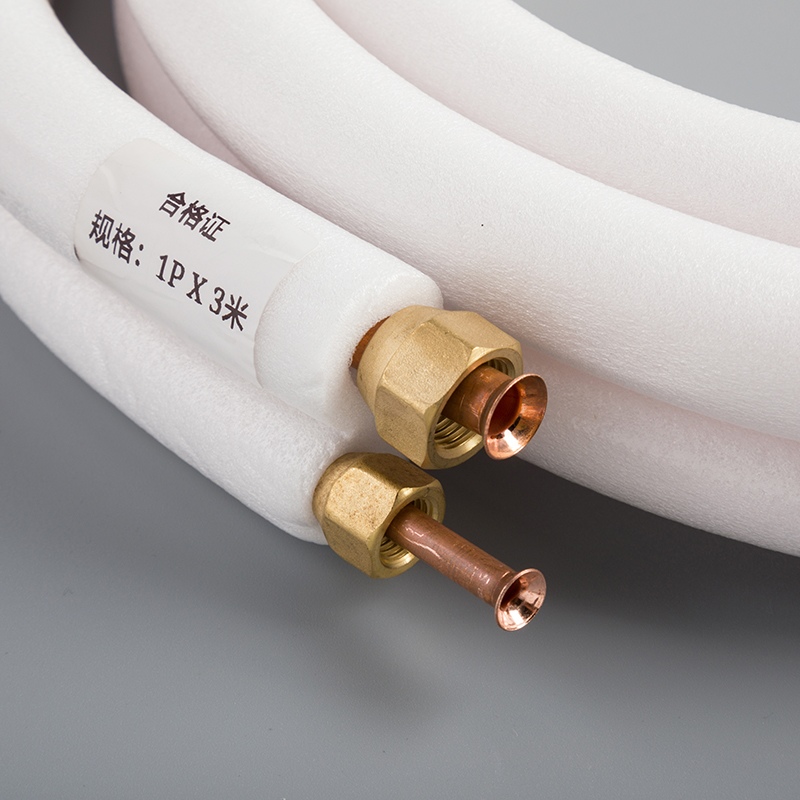Your Complete Guide to Extending Copper Pipe Coil Lifespan

Write a guide on enhancing the longevity of 1/4 3/8 twin copper pipe coils by preserving the integrity of these copper pipe coils. Ensuring longevity and efficiency is paramount. By understanding the significance of maintenance, individuals can enhance the durability of their systems. Exploring key practices such as regular cleaning, inspection for damage, and proper installation techniques is crucial. Extending the lifespan of 1/4 3/8 twin copper pipe coils not only guarantees optimal performance but also minimizes the risk of unexpected issues. Embracing these maintenance strategies empowers homeowners to safeguard their investments effectively.
Regular Cleaning and Maintenance

To ensure the longevity of 1/4 3/8 twin copper pipe coils, it is essential to prioritize regular cleaning and maintenance. By following these maintenance tips diligently, you can ensure the longevity and efficiency of your plumbing system while minimizing the risk of unexpected failures. Remember, proactive care is key to preserving the integrity of your copper pipe fittings for years to come.
Cleaning Techniques
Dust and Debris Removal
When it comes to cleaning 1/4 3/8 twin copper pipe coils, dust and debris removal play a crucial role in maintaining optimal performance. Regularly clearing away any accumulated dust or debris prevents blockages that could hinder the coil's efficiency.
Cleaning Frequency
The frequency of cleaning your copper pipe coils depends on various factors such as environmental conditions and usage. It is recommended to establish a routine cleaning schedule to prevent buildup that may impact the functionality of the coils.
Maintenance Practices
Preventing Efficiency Loss
One of the primary maintenance practices for 1/4 3/8 twin copper pipe coils is preventing efficiency loss. By keeping the coils clean and free from obstructions, you can ensure that they operate at their best capacity, contributing to their longevity.
Tools and Products
Utilizing appropriate tools and products for cleaning and maintenance is vital in extending the lifespan of your copper pipe coils. From gentle cleaning solutions to specialized brushes, having the right equipment can make a significant difference in preserving the integrity of the coils.
Maintain your copper with these methods, and it will keep doing its job for several decades.
Inspection and Damage Prevention
Identifying Corrosion and Damage
When examining 1/4 3/8 twin copper pipe coils for signs of wear, it is crucial to be vigilant in identifying any indications of corrosion or damage. Signs of Corrosion can manifest in various ways, such as discoloration or pitting on the surface of the copper tubing. These visual cues serve as early warnings of potential issues that could compromise the integrity of the coils. Additionally, observing Damage Indicators like leaks or unusual noises during operation can signal underlying problems that require immediate attention.
Preventive Measures
To safeguard the longevity of 1/4 3/8 twin copper pipe coils, implementing preventive measures is essential in mitigating risks associated with corrosion and damage. Applying Protective Coatings to the copper tubing acts as a barrier against environmental factors that may accelerate deterioration. These coatings not only enhance resistance to corrosive elements but also prolong the lifespan of the coils. Furthermore, employing effective Insulation Techniques helps regulate temperature fluctuations and minimizes thermal stress on the pipes, reducing the likelihood of damage over time.
In scenarios where cuprosolvency poses a threat to copper plumbing materials, it is imperative to address this issue promptly by adopting suitable mitigation strategies. Understanding how water velocity impacts copper tube corrosion can guide homeowners in maintaining optimal service life for their plumbing systems. By adhering to recommended flow rates and monitoring water quality, individuals can proactively protect their copper pipe coils from premature degradation.
Case Studies:
Type K Copper Pipes Longevity
Type K Copper Pipes can last over 50 years in ideal conditions.
Water Velocity and Copper Tube Corrosion
Water velocity through copper tubes should be within the range of 5 to 8 feet per second for optimal service life.
Cuprosolvency Case Studies
Four Cases of Cuprosolvency and Copper Plumbing Corrosion explore different instances of accelerated uniform corrosion in copper plumbing materials.
By integrating these insights into maintenance practices for 1/4 3/8 twin copper pipe coils, homeowners can fortify their systems against common threats that jeopardize longevity and performance.
Proper Installation and Support

When it comes to 1/4 3/8 twin copper pipe coils, ensuring proper installation and support is paramount for maximizing their lifespan and efficiency. By adhering to industry best practices, individuals can safeguard their plumbing systems against potential issues that may arise from improper handling or inadequate support.
Installation Best Practices
Avoiding Bends and Kinks
To maintain the integrity of 1/4 3/8 twin copper pipe coils, it is crucial to avoid excessive bending or kinking during the installation process. Any sharp bends or kinks in the copper tubing can restrict the flow of refrigerant, leading to inefficiencies and potential damage over time.
Ensuring Proper Connections
Properly connecting copper pipe fittings is essential for seamless operation and longevity of the system. Secure connections prevent leaks and ensure optimal performance, reducing the risk of unexpected failures down the line.
Support and Stability
Preventing Sagging
Supporting 1/4 3/8 twin copper pipe coils effectively helps prevent sagging, which can compromise the overall functionality of the system. Utilizing reliable support brackets, such as Oatey® Copper Pipe Support Brackets, ensures that the pipes are positioned securely for long-lasting performance.
Monitoring Pressure Levels
Regularly monitoring pressure levels within the copper pipe coils is vital for maintaining optimal operation. By keeping pressure levels within recommended ranges, individuals can prevent strain on the coils and extend their service life significantly.
In addition to proper installation techniques, utilizing high-quality Copper Pipe Fittings plays a crucial role in enhancing the durability of plumbing systems. These fittings offer unparalleled strength and corrosion resistance, ensuring reliable performance even under extreme conditions.
By following these installation guidelines and prioritizing adequate support for 1/4 3/8 twin copper pipe coils, homeowners can proactively protect their investments and enjoy efficient plumbing systems for years to come.
Recap of Key Maintenance Practices:
Implementing regular cleaning and maintenance routines is essential to preserve the efficiency and longevity of 1/4 3/8 twin copper pipe coils.
Conducting thorough inspections for corrosion and damage allows homeowners to address potential issues promptly, safeguarding the integrity of their plumbing systems.
Proper installation techniques, including avoiding bends and kinks, ensuring secure connections, and providing adequate support, are crucial for maximizing the lifespan of copper pipe coils.
Importance of Regular Inspection and Proper Installation:
By prioritizing regular inspections and adhering to proper installation practices, individuals can proactively identify and mitigate risks that could compromise the performance of their copper pipe coils.
Monitoring pressure levels within the coils and utilizing high-quality fittings contribute to maintaining optimal operation and extending the service life of the plumbing system.
Final Thoughts on Extending the Lifespan of Copper Pipe Coils:
Understanding the factors that influence the longevity of copper pipes underground is paramount in making informed decisions regarding maintenance practices.
By embracing a comprehensive approach to care for 1/4 3/8 twin copper pipe coils, homeowners can ensure durable and efficient plumbing systems that stand the test of time.
See Also
The Definitive Guide to Purchasing Copper Pipe Coils
The Comprehensive Guide to Buying Copper Pipe Coils
The Ultimate Guide to Buying Copper Pipe Coils
The Comprehensive Manual for Choosing 1/4 3/8 Copper Pipe Coils


